Corporate Purpose Is the Tie That Binds: CECP’s Annual Trends Report


Leading companies are laser-focused on corporate purpose. They explore what their purpose is and how it translates to their people and community and bring that purpose to life through intentional practices and strategies. They use a human-centered lens for all business operations because it helps them see around corners and delivers a competitive edge. All this leads to a future-forward outlook that enables a long-term view. Within this purpose megatrend, we see five prominent themes: Employee Power, Collaborative Advocacy, Responsible Tech, Long-Term Growth Going Mainstream, and Impact Measured.
EMPLOYEE POWER
Looking Back:Two thousand eighteen was the year of the employee. Low unemployment rates and the ongoing war for talent have created a new focus on the needs of the employee to bolster recruitment, training, and retention efforts. At the same time, people are finding opportunities to speak up in support of their purpose and values. And these voices have enormous power: employee’s social media posts can generate 8X more engagement than when a brand shares similar content. The intersection of these two trends is employee power. Leading companies are listening to and supporting the needs of their employees, and providing tools and resources to elevate those voices.
Companies are doubling down on support and protection for employees in ways such as education, nonprofit fellowships, healthcare, pro bono sabbaticals, and more. At Google, employees used the tools the company gave them—a culture of speaking out and collaborative tech —to make a difference in the world.
What CECP is Doing:
CECP tracks employee power through our work on diversity & inclusion (D&I), employee communications, purpose and fulfillment in the workplace, and through Giving in Numbers, the unrivaled leader in benchmarking on corporate social investments. Findings include:
- Matching gifts: Hidden in traditional giving programs is a mighty employee power tool, and companies have figured out how to supercharge them. Sixty-two percent of companies offered employee-choice matching gifts (Giving in Numbers).
- Purpose and fulfillment: CECP, Imperative, and PwC’s report, Building a Fulfilling Employee Experience, uncovered fulfillment as the focal point of individual purpose and the new employee power structure. Eighty-two percent of employees agree that fulfillment is primarily their own responsibility, and 42% say that they are their own greatest barrier to finding fulfillment at work.
- Employee communications: Leading companies make use of employee recognition programs and automatic feedback outlets for employees to share their stories. Companies don’t just communicate top-down; they also enable sharing one voice at a time.
- Diversity & Inclusion: CECP’s Diversity & Inclusion in Corporate Social Engagement, with the Walmart Foundation, found employees are forming D&I employee resource groups (ERGs), with access to budgets to identify and support issues and organizations they care about.
Employee passions and needs will continue to dominate. Companies will employ complex (and simple) listening strategies, both digital and in person, such as town halls, focus groups, and advisory committees, to assess and test programs, policies, and messages.
Read the full blog on CECP's Insights Blog: https://cecp.me/2SOrHvw
Also published on 3BL Media news.
Booz Allen Leads the Way for Women on Corporate Boards
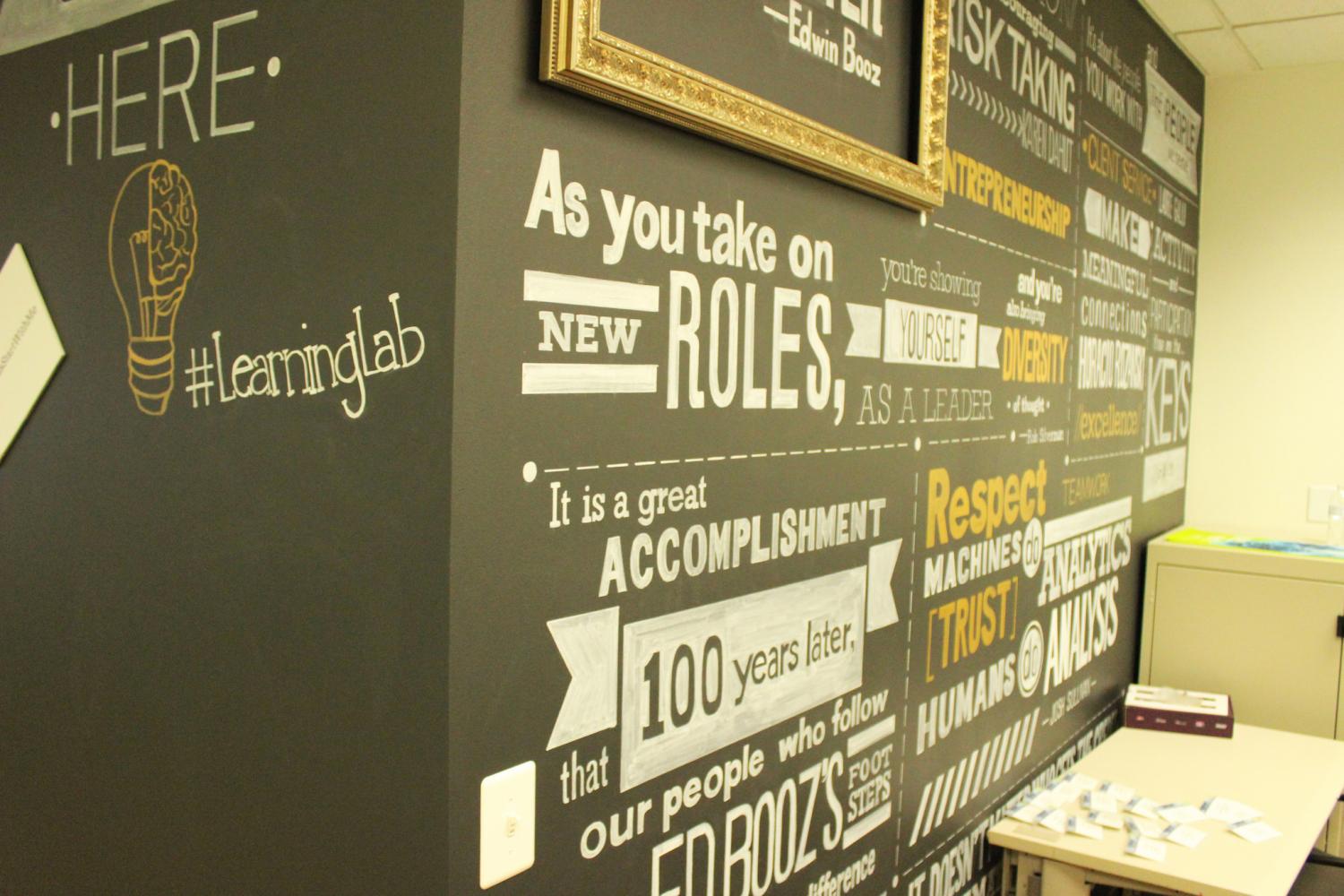

On average, women hold 20 percent of the seats on Fortune 1000 corporate boards, according to a recent report by the diversity advocacy group 2020 Women on Boards. This year, Booz Allen was proud to add two extraordinary women to its board of directors, Michéle A. Flournoy and Ellen Jewett, who joined directors Joan Amble, Melody Barnes, and Gretchen McClain to make Booz Allen’s board 38.4 percent female -- nearly double the industry average.
In addition, Booz Allen stands out among publicly traded companies for gender diversity at the highest levels of firm leadership with 6 of the 11 members of the leadership team being women.
In an October interview with Washington Technology, chief people officer Betty Thompson said, “We are looking for the highest quality people and diversity is certainly a part of that. People want to see people that are like them at the top of the company and on the board.”
Recently, Women Inc. magazine featured Amble, Barnes, and McClain among its 2018 Most Influential Corporate Directors in recognition of their work on the Booz Allen board. The 2018 Most Influential Corporate Directors list “represents a sampling of women’s professional excellence at the highest level” and will be featured in the winter 2018 edition of Women Inc.
“Women Inc. is proud to recognize this distinguished group of women serving on public boards,” said Catrina Young, executive vice president and chief communications officer of Women Inc. Magazine. “We are inspired by these accomplished executives, their distinguished careers, and the corporations that demonstrate inclusive board composition.”
Multifaceted leadership that empowers others
Amble joined Booz Allen’s board in 2012 after holding a variety of executive positions for American Express Company and GE Capital. She also serves on the boards of Sirius XM Holdings Inc. and Zurich Insurance Group, is a member of the Standing Advisory Group for the Public Company Accounting Oversight Board (PCAOB), and co-founded W.O.M.E.N. In America, a leadership program designed to enable high-potential women in business to achieve their goals.Before joining Booz Allen’s board in 2015, Barnes worked for President Barack Obama, U.S. Sen. Edward M. Kennedy, and the Center for American Progress. She’s currently a senior fellow and visiting professor at the University of Virginia and a principal of MBSquared Solutions LLC, the domestic policy strategy firm she co-founded. She also serves as chair of the Aspen Institute Forum for Community Solutions and as a director at Ventas Inc., a real estate investment trust.
Flournoy was Under Secretary of Defense for Policy from 2009 to 2012 and co-founded the Center for a New American Security. A managing partner at WestExec Advisors and a Senior Fellow at Harvard Kennedy School, she is also currently a member of the Council on Foreign Relations and the Aspen Strategy Group. Previously, she served on the Defense Policy Board, advised the Center for Strategic and International Studies, and was a distinguished research professor at the National Defense University.
Jewett brings to Booz Allen’s board experience in domestic and international finance, business and investment, talent management, and airports and infrastructure. She spent more than 20 years at Goldman Sachs in positions including head of the public sector transportation group and the airport finance group. She is currently managing partner at Canoe Point Capital LLC and previously worked at BMO Capital Markets as managing director and head of U.S. Government and Infrastructure.
McClain, who joined Booz Allen’s board in 2014, played a pivotal role in the development of the International Space Station Program, serving as chief director of the space station and deputy director for space flight. She spent nine years with NASA as deputy associate administrator for space development. She’s held senior executive positions with Honeywell Aerospace, ITT Corporation, and Xylem—where she was president and CEO—and also currently serves on the board of directors for AMETEK.
Learn more about the 2018 Most Influential Corporate Directors list and how Booz Allen supports women in the workplace.
Previously posted on 3BL Media news.
Image credit: Booz Allen/Flickr
Taking a Stand: 2019 Corporate Sustainability Predictions


It has been quite a year for those of us immersed in the corporate responsibility world, especially when we've witnessed how many companies have stepped up their activism during 2018. We’ve seen CEOs increasingly speak out on diversity and inclusion, companies oppose the separation of families at the U.S. border with Mexico and watched corporate leaders double down on volatile issues like gun violence.
Following a most eventful 2018, can this coming year even measure up? Recently in New York City, 3BL Media and TriplePundit brought together various business leaders and asked them what corporate responsibility trends we could expect to see during 2019. We took the liberty of selecting a few quotes that stand out – and for those we're quoting, we're adding their Twitter handles as we look forward to them sharing more of their wisdom and perspective in the coming year.
To sum up in a few words, expect to see, or perhaps we should say hear, a lot more speaking out in 2019:
"I think we’re going to see companies get a lot more active in social, political and environmental issues. In the past, companies have been hesitant to speak out, but they are really being pushed by their employees to take a stand.” - Danielle Holly, CEO of the skills-based volunteering nonprofit Common Impact.
"For 2019, I really see pre-competitive collaboration as being a big trend. Companies collaborating has been happening, but I think that increasingly we are going to see competitors get together to tackle big issues,” - Robbie Lock, Executive Director of the 3BL Association.
"2019 is going to be spent, I think, with the specter of 2020, with the addition of 2030 goals and with the realization we have to speed up, and hurry up move forward faster, make bigger changes and really, really drive impact,” - Susan Arnot Heaney, Director of Marketing and Collaborating Company Engagement at Rainforest Alliance.
We wanted to gain more insight beyond that evening in New York, so we also reached out to other thought leaders across the U.S. to gaze into their crystal ball for 2019. Here is what they anticipate for corporate sustainability in the next 12 months:
“The hall pass has expired on Silicon Valley’s M.O. of building market scale and dealing with its social impact later. New guard rails are inevitable . . . In addition, increasing employee activism — aided by social networks like coworker.org or apps like Blind — will spotlight corporate actions, policies or strategies that do not align with stated values.” – Barie Carmichael, Senior Counselor at APCO Worldwide and co-author with James Rubin of Reset: Business and Society in the New Social Landscape.
“Employee engagement: has been a buzzword for a while now, but this year we saw what it truly means for employees to be engaged -- from the ground up. So much of the bold activism we're witnessing from CEOs on issues like gun control and immigration has been a direct result of pressure from employees and in many cases, employee working groups (ERGs). As part of this trend, we'll see more companies actively encourage employees to engage in tough or polarizing conversations at work. Companies will embolden employees to be vocal about the issues they care about.” - Susan McPherson, Founder and CEO of McPherson Strategies.
“I'm going to be keeping an eye out for how businesses continue to step up to prove their reason to be - whether that's by addressing climate change in a tangible way, activating their brands for purposeful actions or truly connecting their business models with how they behave and who they associate with (through their advertising dollars, sponsorships, etc.). I also think we're going to continue seeing momentum around supply chain innovations - from digital solutions to cohesive partnerships on issues such as living wages and human rights.” – Aman Singh, Editor-in-Chief and Head of Content Strategy, Futerra.
“Accelerated digitization, as in the Internet of Things (IoT), along with the ensuing data of the supply chain and marketplace, will continue to advance radical transparency to uncover new risks, but also key opportunities. In addition, boards of directors across a range of sectors are learning quickly that they need to develop stronger competencies and strategies to manage ESG risks lurking in their business model/practice.” – Dave Stangis, Chief Sustainability Officer and Vice President of Corporate Responsibility at Campbell’s Soup Company.
Be sure to subscribe to our weekly Brands Taking Stands newsletter, where our Editor-in-Chief John Howell will update you on the latest trends in corporate activism.
Image credit: Fibonacci Blue/Flickr
Why TD Executives Are Banking on Sustainability


Nicole Vadori remembers being in grade school and watching the news about a fire at a tire warehouse with big plumes of black smoke that would inevitably cause environmental damage and thinking at that moment, “how can adults let this happen?”
Today Nicole is associate vice president and head of environment at TD Bank Group, where she spends her days finding ways to help reduce the bank’s carbon footprint, mitigating climate risk in its investment activities, and helping to drive business initiatives that can create positive environmental and social impacts.
I recently caught up with Nicole to talk about what TD is doing to help support the transition to a low-carbon economy, how the company analyzes climate risk, and to hear about her favorite Toronto restaurants.
Here’s an edited transcript of our conversation.
TD was the first major North American bank to go carbon neutral. What’s the story behind setting and meeting this goal?
We became carbon neutral in 2010, though the process started long before then. Nearly a decade ago TD identified climate change as an issue that would impact the business and the communities we serve – and it was also registering as an important issue for our customers. After setting the carbon neutrality goal, we then measured environmental impact because you can't reduce your footprint until you understand the scope of it. We factored in the footprint of thousands of branches in the U.S. and Canada, plus our corporate offices, data centers, and employee travel.
Then we had to figure out how to reduce our impact, so we developed environmental expertise within our enterprise real estate team, which manages all of TD’s branches and corporate spaces. Part of their job is to identify opportunities for reducing energy use and improving efficiency. Today, more than 200 of our branches are LEED certified, we’ve transformed our lighting to LEDs, and over 140 branches in the U.S. have solar panels that produce electricity.
The last step in going carbon neutral was to offset the remainder of our energy consumption. We buy renewable energy credits and carbon offsets to account for the rest of our electricity use and emissions. Since 2015, we have met our 100% renewable electricity commitment and have sourced renewable energy credits to account for 100% of the electricity used in our operations.
Now that you’ve reached the carbon-neutrality goal, what’s the next big target for TD?
A general trend within the industry, which we agree with, is to shift focus from just environmental impacts within our own operations to a conversation about the broader role of banks in the world.
That’s one reason why we’re a part of CDP’s supply chain program, which has allowed us to engage some of our largest vendors in discussions on greenhouse gas management. We also support our small to medium sized vendors through grassroots initiatives to help them manage, understand and reduce their own emissions.
We are also looking at how we can help drive growth in the renewable energy market and support clean tech initiatives that encourage more responsible energy use.
This work is part of a larger commitment for the bank through our corporate citizenship strategy, The Ready Commitment. Launched in March 2018, the multi-year initiative includes a target of CDN $100 billion by 2030 through our financing and investing activities, and other programs, to support the transition to a low-carbon economy. It’s aligned to a larger vision for TD to be a leader in helping shape the green economy.
Our TD Green Bond program is one example of how we’re using traditional financing products to drive low-carbon, clean tech projects. We were the first Canadian bank to issue a green bond, raising CDN $500 million in 2014, with the proceeds helping to finance green loans on our commercial banking side. We issued our second green bond – USD $1 billion in 2017 – that was hugely successful, oversubscribed, and attracted even more investors to the bank.
How does TD decide which projects to invest in?
We developed a framework that we follow and criteria we consider when reviewing different loans and types of ventures. With a green bond, we look at three different areas: low-carbon energy generation (wind, solar, etc.), energy efficiency and management (e.g., green buildings), and green infrastructure and sustainable land use (this includes investments that support conservation and climate resiliency).
What we are seeing through our low-carbon financing is that the market demand is there for these types of initiatives. But we also know that the transition to a low-carbon economy will take several decades as we invest in the necessary infrastructure to support clean, low-carbon growth.
We see an opportunity to work with all energy players, to help develop innovative solutions to make the production of existing traditional energy sources cleaner, while supporting the growth of renewable energy and encouraging more responsible energy use altogether.
What best practices help ensure a level of standardization across the banking industry?
For greenhouse gas reporting, there’s a pretty standardized set of metrics, though there are some nuances. But if we look at our low-carbon target of $100 billion, measurements can vary bank by bank, depending on bank size, function (retail or wholesale), product offerings, and geography.
The recommendations put forth by the Financial Stability Board's Task Force on Climate-Related Financial Disclosures (TCFD) are also really important for our industry, because they help assess risk due to climate change in a systematic way. It's not just the physical impacts such as severe-weather events, it's also about how your business will be impacted by rapid sifts in technology and potential climate policy. TD is proud to be one of the 16 global banks convened y the UN Environment Finance Initiative to participate in this Task Force.
The TCFD says that companies need to start conveying the financial risk of climate change to investors – and increasingly investors are showing interest. The analysis requires a shift in thinking and is a huge undertaking not just for banks, but also for our clients in various industries – oil and gas, mining, consumer goods, etc.
What tools or innovations are you using to assess climate risk?
Bloomberg MAPS is a great data processing and visualization tool. The platform allows for geographic reconciliation of data. For instance, you can take a bank's loan portfolio, place it on a map, and overlay it with predicted exposure to extreme weather events like cyclones, wild fires, and floods. From there, we can calculate and determine the amount of the bank’s portfolio at risk. We’re starting to do this analysis with the portfolios most exposed to climate related risk – our lending, investment, and insurance portfolios.
A tool that's able to layer multiple datasets in a standardized way is hugely powerful for us to be able to complete this analysis. Otherwise, it would involve multiple spreadsheets and trying to correlate everything manually. Also, when you're able to visualize data, it's easier to have conversations internally and with our clients about where impacts could occur, what the exposure could be and how risks can best be mitigated.
Last but not least, Toronto has a reputation for having an amazing food scene. What’s your favorite restaurant?
One of my favorites is Kid lee by chef Susur Lee. He makes an amazing Singapore slaw that has 19+ ingredients, including flower petals and I don’t even know what else, but it tastes delicious. Terroni is another favorite for Italian comfort food. Best.Pasta.Ever. (outside of Italy).
Previously published on EDF+Biz and 3BL Media news.
Systems Thinking and ESG Investing in 2019
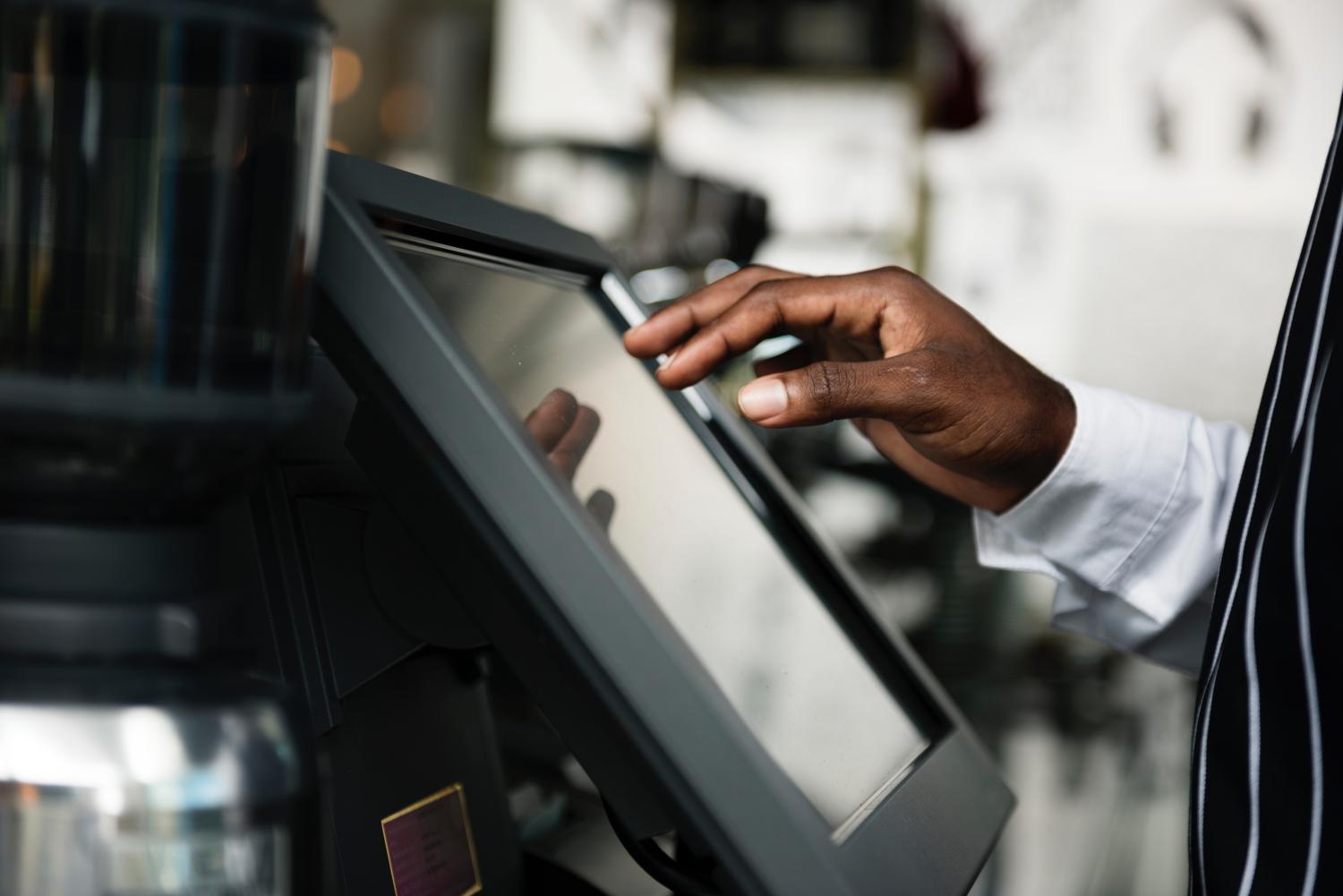

Amidst all of the important improvements in environmental, social and governance (ESG) data, all of the thoughtful research reports, and all innovative new investment options, another, deeper trend has taken root. As we turn towards 2019, we see increasing evidence that systems thinking is becoming more prevalent and influential throughout corporations and the investment community. This subtle, under-the-surface development is one of the most vital requirements for effective long-term investing.
Why is this wonky-sounding idea important? Systems thinking is a deceptively simple concept, a holistic approach to analysis that focuses on how parts of a broader system connect and relate to one another. You know that old saying, the whole is greater than the sum of the parts? Systems thinking aims to understand the whole, in addition to the individual parts. (For a great overview of systems thinking, I recommend Donella Meadows’ classic Thinking in Systems or Leverage Points: Places to Intervene in a System).
Systems thinking is a close cousin to common sense, but it stands in contrast to the arc of development of our analytical and educational tools. Over time, these tools have focused on more and more narrow lines of inquiry, examining more and more specialized questions. This expertise is needed, of course, but it is even more powerful when our specialized knowledge is combined with an understanding of the greater context. For example, when we recognize environmental, social, and governance issues as deeply intertwined with all other business issues, and when we recognize business issues as deeply intertwined with the broader health of our planet and our communities, we have the chance to develop more complete views, and to make better investment decisions. Without the reconnection that systems thinking brings, all of the metrics in the world will not lead us to better outcomes, no matter how thoughtful, needed, and accurate they may be.
Evidence of the rise of systems thinking is all around us, though it is not usually labeled as such. When Silicon Valley leaders talk about having “growth mindsets,” that’s systems thinking. When companies link their operations to the United Nations Sustainable Development Goals (SDGs), that’s systems thinking.
When investors call for an examination of purpose that goes beyond a simple business plan, that’s systems thinking. When a research report that used to contain only short-term financial information has new sections talking about rights of Indigenous communities, and policy changes, and customer demographics, and shifts in weather patterns, that’s systems thinking. When one potential new hire after another tells you about their multidisciplinary senior thesis, that’s systems thinking.
As these deeper reconnections between issues and disciplines and data sets take root, there are three powerful benefits that can arise for investors. First, we have the chance to extend our time horizons. Much has been written about the dangers of short-term-ism, both in business and in life, but we often lack processes that can serve as counterweights to the ever-faster pace of shallow data flows like stock prices. Diving into analysis of purpose and impact naturally stretches our time horizon out, so that our units of analysis more closely match the scale of real results, the ones that compound across many quarters and many years. Interestingly enough, extending our time horizon allows us to focus on the most urgent issues of our time, from climate risk to workplace equity to the ethics of emerging technologies.
Second, a systems mindset allows us to ask better questions. In addition to pursuing straightforward answers to our tactical questions, we can pursue more open-ended inquiry that goes beyond a checklist mentality. For example, instead of asking only for a list of supply chain policies, necessary though that is, we can begin to ask about how actual practices have changed over time, and about what challenges still do not have satisfactory solutions. These questions don’t always have easy answers – and in fact they sometimes don’t have answers at all – but they get us closer to a truer, more complete understanding of the links between an income statement and the actual world.
Finally, this reconnection allows us to begin to assess impact in a more complete and nuanced way. Impact metrics are quickly advancing, and companies are taking this analysis seriously, in part because it allows them to begin to answer the most essential question of all: is what we’re doing truly valuable? This is a different question than whether revenues are growing, or whether returns on financial capital are adequate. We have never before had enough information to match the intuitive, qualitative answers to these questions with empirical, quantitative answers. As these two streams of analysis meet, we will surely confirm that some investments have tremendous positive impacts that ripple out into the world, whereas others are ultimately destructive. Just as surely, there will be some surprises in each group, with important implications for investors.
So what does this more complete, more complex view of the world get us? It helps us to move from a mechanistic view, where even the most nuanced questions are reduced to a box to be checked, to one that is a little messier but more complete, where some questions are still evolving. Along the way, this shift inherently encourages collaboration and connection between individuals and institutions, since it requires contributions from different points of view and different types of expertise.
Systems thinking allows us to extend our time horizons, ask better questions, and assess true impact. It’s a lot more work, to be sure, and it may not lead to conclusions that have the crispness (and narrowness) of a quarterly earnings estimate. But it’s a worthy endeavor, and when combined with all that has already been learned, this approach can steer our investment decisions towards true profit, and true benefit.
Originally posted on Green Money Journal, which has been covering sustainable business and impact investing for over 26 years.
Image credit: rawpixel/Unsplash
Coal: The Elephant in the Room in Katowice

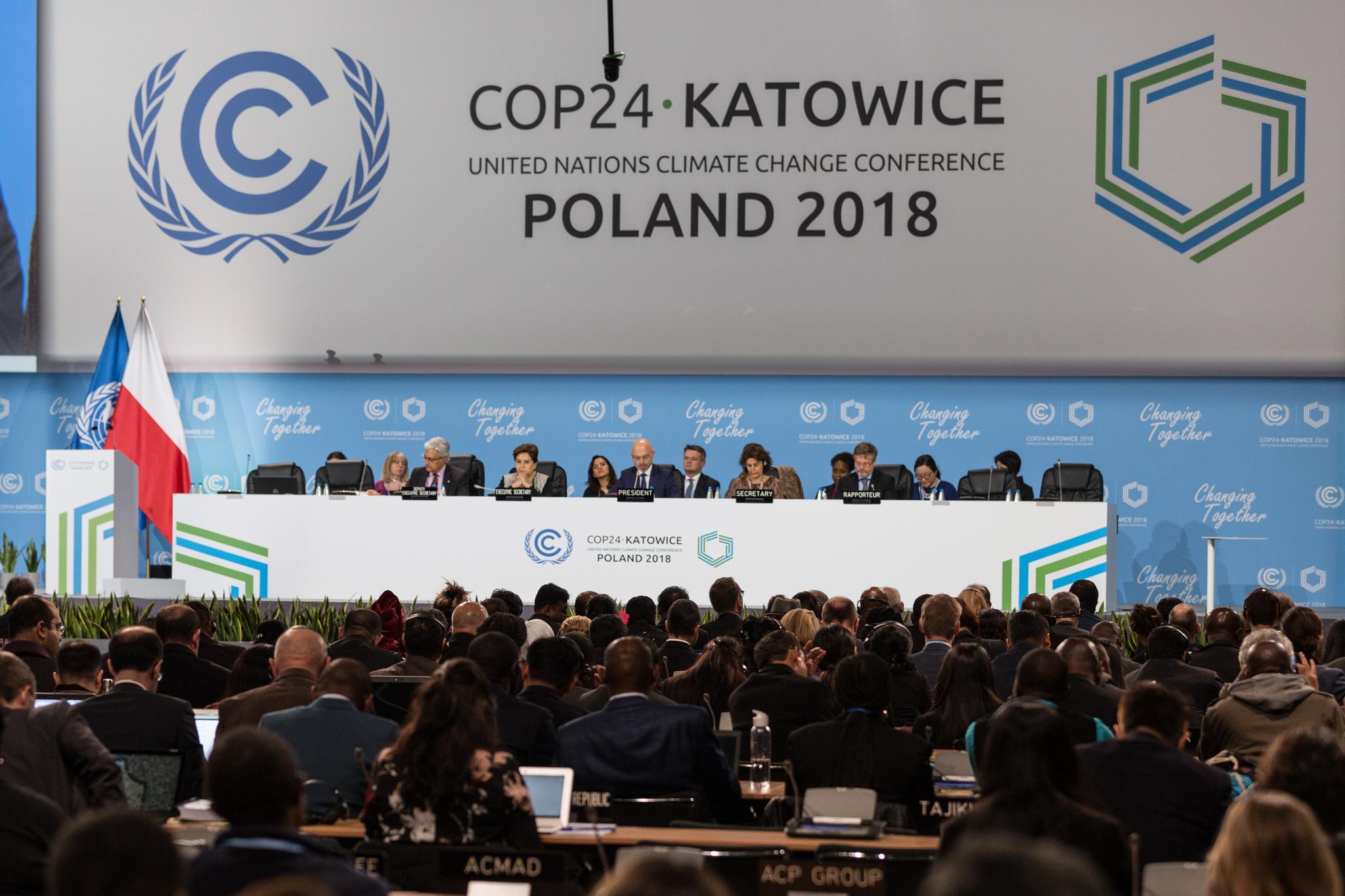
Arriving into Katowice, Poland, host city for COP24, you were immediately struck by the obvious conflict at the heart of the United Nations climate talks, as sulphur tinged particulate matter began to assault your airways.
Poland chose Katowice as the host city precisely because its location at the center of the Silesian coal and industrial region would bring into sharp focus the trade-offs to be made by policy makers pursuing radical transition from fossil fuels.
Some 48,000 Poles are estimated to die annually from illnesses related to poor air quality. Poland is home to 33 of the of European Union’s 50 dirtiest cities. At the same time, according to Euracoal, the Polish coal mining industry provides around 100,000 of the 185,000 coal mining jobs in the EU28. These coal workers are represented by powerful trade unions pushing back against energy sector reforms.
For public health and for the climate, Poland needs to urgently transition from a fossil fuel based economy to one based on renewables. Yet the Polish government wants to ensure a "just transition," where the rights of workers and communities are respected, with alternative, well paying low-carbon jobs assured for those who want them.
Our primary research focus is the impact of climate change on financial markets. Our latest report, Powering Down Coal, explores the global asset level economics of coal generation, demonstrating when coal units should be phased out consistent with the economics of renewable energy cost parity and the climate goals set out in the Paris Agreement.
In short, how do we attain the least cost renewable energy alternative to fossil fuel generation globally?
The study examined 6,685 individual coal units, representing 95 percent of global coal capacity. We should also note there are other, more compelling reasons to expedite coal phase out than economics alone. Jim Hansen, director of the NASA Goddard Institute for Space has said:
”The single greatest threat to the climate comes from burning coal. Coal-fired generation is historically responsible for most of the CO2 in the air today – responsible for about half of all carbon dioxide emissions globally.”
About 3.5 billion tons of coal is currently burnt globally for power and heat every year, contributing to 45 percent of the world’s emissions. Stopping new investment and unravelling old investment is therefore critical to the success of the Paris Agreement on climate change, according to Nick Mabey, director of the climate change think tank E3G.
Speaking at a Powering Past Coal Alliance (PPCA) forum on Thursday 13 December, Mabey said commitments and promises were not adding up.
“We will all need to get off coal if we are to meet the ambitions of the Paris Agreement,” said Catherine McKenna, the Canadian Environment Minister who spoke at the event and is leading the PPCA with her United Kingdom counterpart, Claire Perry.
The PPCA, which promotes switching from coal to clean energy, is made up of states, regions and cities. Ireland joined earlier this year and Senegal, Israel, Scotland, the cities of Melbourne and Sydney, and Scottish Power were announced as new signatories during COP24, bringing the number of members to 80 in total.
Carbon Tracker’s contribution to the PPCA debate, in the form of the global coal portal and Powering Down Coal report, launched at the U.K. Pavilion provides a global blue print for governments, civil society and investors to phase out coal in a manner consistent with Paris.
Despite the promise of Katowice, which hinted at difficult conversations between coal dependent nations such as Poland, Germany, India, China and Indonesia and climate policy makers – agreeing on concrete plans for coal phase out remains the elephant in the room, as the rapid deflation in the cost of renewables increasingly represents the lowest cost energy option for developing nations.
The PPCA deserve significant credit for sparking a difficult conversation and bringing states, regions, cities, and business to the table in a rapidly growing alliance.
Carbon Tracker sees the transition off coal power as a collective action issue, which will require policymakers, investors and civil society working together. Initiatives such as the PPCA and CA100+ offer promise in this regard. However, a requisite for an effective collaboration between policymakers, investors and civil society is data – and, in particular, data which transparently articulates the economic and financial risks of not shutting coal in a manner consistent with the temperature goal in the Paris Agreement. Carbon Tracker is looking forward to working with PPCA and CA100+ as well as our local partners 2019 to showcase how our analytics can help humanity embrace the low cost renewables revolution.
After the eleventh hour agreement of the "Paris rule book" at Katowice, Matthew Gray, who wrote the aforementioned Powering Down Coal report, said:
“we have a mostly complete Paris rule book, which is great. We now desperately need more political ambition to avoid asset stranding which is happening in real-time.”
Our below 2°C scenario finds around $267 billion of stranded asset risks globally, which should help focus the minds of government policy makers, investors and civil society to agree an orderly and just transition beyond coal.
Previously published on Carbon Tracker.
Image credits: Carbon Tracker; UN Climate Change/Flickr
A Year in Purpose: The Top 10 Trends of 2018


While 2017 was the year companies stood up for social justice issues, 2018 will be regarded as the year companies took action. Supporting social justice issues became mainstream this year as employees turned into activists demanding change within their own companies and businesses joined growing social movements – lending support to grassroots efforts like #TIMESUP and March for Our Lives. In 2018, we saw investors making their voices – and demands – heard and major companies making such bold commitments that the ripple effect may advance the sustainability progress of entire industries.
As the year draws to a close, Cone evaluated a year’s worth of purpose-driven news, activities, campaigns and announcements to bring you the top 10 trends of 2018:
- Mainstreaming social justice: While more companies have been addressing social justice issues over the past few years, this year we saw mainstream companies go bigger and bolder with their support. No longer relegated to companies like Patagonia and Ben & Jerry’s, this year we saw Nike choose Colin Kaepernick (to the chagrin of some) as the face of 30th anniversary campaign for “Just Do It,” Levi Strauss’ CEO take sides on gun control and Dick’s Sporting Goods enter the fray as the new champion of gun control advocates.
- Applying ads to change assumptions: The advertising industry came together in 2017 to form the global Unstereotype Alliance to leverage the power of advertising to change perceptions. Now we’re seeing those efforts gain traction. Gap won praise for its ad aimed at “normalizing breastfeeding,” while Apple celebrated marriage equality in Australia with an ad sharing same-sex marriage moments. Barbie also took a lead in educating parents about the “Dream Gap” through a powerful video showing how young girls begin to develop limiting self-beliefs as early as age 5.
- Employee activism on the rise: As hot-button issues and the movements surrounding them become ever-more pervasive, employees are starting to take a microscope to the operations and actions of their own employers. Nike faced a lawsuit from four female employees over gender discrimination, while Google employees took to the streets in a protest over the company’s handling of sexual harassment. Meanwhile, Deloitte employees took issue with the company’s consulting contract for Immigration and Customs Enforcement (ICE) in the wake of the separation of families at the U.S.-Mexico border.
- Using business to encourage political activism: Although it was previously the norm for business to stay out of politics, recently we’ve seen an influx of brands entering the political fray – even going so far as to sue the President. In 2018, we saw more companies use their business as a platform for political activism for their employees and consumers. Eileen Fisher gave employees time off to call legislators about immigration on World Refugee Day and TOMS’ latest gun violence prevention effort included a template for consumers to send a postcard to their legislators demanding universal background checks for gun purchases. This year Patagonia launched Action Works as a way for individuals to take part in environmental activism.
- Accessibility gets accelerated: As we continue to celebrate diversity and inclusivity, more companies are ensuring their products and services can be enjoyed by all – regardless of disability. Rice Krispies Treats developed Braille stickers with uplifting phrases for parents to stick on their visually impaired children’s lunches and Microsoft’s Xbox designed a new adaptive controller complete with adaptive packaging to create a more inclusive gaming experience from purchase to play. On World Autism Awareness Day this year, the NBA partnered with nonprofit KultureCity to launch the world’s first sensory-inclusive retail store.
- Game-changing industry leadership: With the newest climate reports calling for urgent action, some large brands are stepping up, making some game-changing – and industry-shifting – moves. Both Starbucks and Corona made commitments that could shift the trajectory of their industries. Starbucks set the precedent for competitors and partners alike with a commitment to eliminate single use straws from its 28,000 stores, and Corona created a six pack ring made of biodegradable, plant-based fibers and byproducts that could make plastic rings a thing of the past. Danone North America hit a major milestone this year, becoming the world’s largest B Corp, proving that size and shareholders aren’t a barrier to having a dual mission of driving growth and positive societal impact. But as Danone NA’s CEO Mariano Lozano cites, it hopes to become second to another company soon.
- Radical transparency catches on: Although transparency is certainly nothing new, in 2018 we saw companies take a more aggressive approach to bringing consumers and other stakeholders into the fold. Marks & Spencer became the first supermarket chain in the U.K. to publish details of its use of antibiotics in the farm supply chain in order to encourage its competitors to share similar information and ultimately reduce antibiotics overall. Within hours of the announcement, competitor Waitrose announced it would do the same. Other companies took a less serious approach to transparency, using humor as a means to break down complex subjects, such as Absolut’s “The Vodka with Nothing to Hide” campaign. Outdoor apparel brand Icebreaker showed it had nothing to hide with its “Transparency Report,” aiming to bring readers behinds the scenes.
- Investors kick up expectations: BlackRock CEO Larry Fink kicked off 2018 with a letter that firmly cemented purpose as an investor expectation, and since that pivotal moment, we’ve seen more investors use their power to force the hands of companies to address social and environmental issues. As a result of activist investor pressure, Shell made an announcement that it will link executive pay to Shell’s carbon footprint. Meanwhile, hedge fund JANA Partners and public pension fund CALSTRS made their voices heard in an open letter to Apple’s board of directors urging Apple to consider the effects of childhood addiction to smartphones.
- Plastic becomes sustainability rallying cry: When National Geographic launched its “Planet or Plastic” campaign with an image of a plastic bag resembling an iceberg as the June cover image, it captured everyone’s attention. National Geographic not only brought the global plastic crisis to the forefront of its consumer experience, but also committed to reduce its own plastic footprint by first saving more than 2.5 million single-use plastic bags every month by switching to paper wrapping for its print editions. Other brands are also making major plastic-eschewing commitments. Ethical retailer Everlane committed to no new plastic in its supply chain by 2021, while Ryanair is making a pledge to become “plastic free” on all flights by 2023.
- Companies support social movements: As social movements like March Four Our Lives and the Women’s March continue to gain traction, we saw companies explore how to apply their expertise and assets to support these grassroots efforts. Early in 2018, a slew of brands supported the teens behind March for Our Lives by providing free rides to the march (Lyft), financial support (Gucci) and even free lunches (ThinkFoodGroup and Eatwell). Fiji Water and eBay have both created campaigns to celebrate and support the #TimesUp movement and TIME’S UP Legal Defense Fund. Ben & Jerry’s also lent its support to organizations on the front lines of “peaceful resistance” such as the Women’s March with its PeCan Resist flavor.
As we head into 2019, we see a future surging with possibility for leadership in purpose. We look forward to seeing how companies are using their voice, scale, business assets and people to take action and driving progress in even bigger and bolder ways.
Image credit: Cone
Sustainability Accounting and the Public Interest
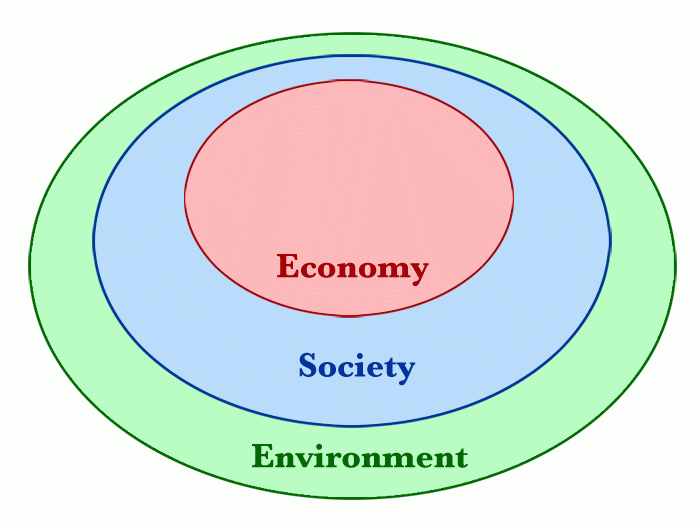

Why should we care about sustainability accounting standards? Who benefits from them? What are the goals of these standards? How do they measure the three Ps of sustainability: people, planet and profit? These are important questions to ask in assessing the value of sustainability accounting.
Standards are needed in part because the Governance and Accountability Institute reports that 85 percent of the companies in the Standard & Poor’s Index of published sustainability reports in 2017. Standardization of information in such reports would go a long way to building integrity into the process and serving the needs of users for non-financial information to complement financial reports.
There is a need to build on guidelines already available for sustainability reporting such as the Global Reporting Initiative (GRI), the most widely used standards for conducting sustainability reports. According to Sustainability Reporting Trends in North America 2017, published by the Center for Sustainability and Excellence, 65 percent of the reports published used GRI standards. GRI relies on key performance indicators that organizations can use to measure and report their economic, environmental and social performance.
It’s been a long time coming, but on November 7, 2018, the Sustainability Accounting Standards Board, an independent body, announced they had published the world’s first set of industry-specific sustainability accounting standards covering financially material issues for 77 industries. The standards are designed to help investors and companies make more informed decisions, better assess material sustainability risks and enhance comparability across industries. The standards are guidelines for reporting sustainability information that are not enforceable by any governmental agency, although the U.S. Securities and Exchange Commission is studying the issue.
For many years the traditional financial reports did not address issues related to the environment and society, focusing instead on the effects on the economy. Now, with sustainability reporting standards, non-financial performance can be assessed as is done with financial performance. This assessment occurs through measurements of the effects of decisions on the environment, social and governance (ESG), issues of importance to investors and other users of financial reports who seek to better understand the relationship between ESG performance and financial performance.
According to an article by Dr. Bob Eccles in Forbes, investors have realized that performance on ESG issues can limit downside risk of not having capital markets to create a sustainable society for future generations and create new opportunities for sustaining long-term value creation. These investors want to practice “ESG integration, which means considering a company’s non-financial performance just as they do its financial performance,” but complain that a lack of useful information hinders their ability to do so.
Sustainability standards can bridge the gap between what investors need to make decisions with respect to ESG issues and what companies disclose in their financial reports. I am not suggesting requiring such disclosures in financial reports, at least not just yet until companies have gained experience with such disclosures. By experimenting with ESG disclosures companies can learn what information meets user needs and builds confidence in the reporting system and what information comes up short.
A good starting point is to utilize “triple bottom line” (TBL) reporting, a term first coined by John Elkington in 1994. TBL links to the three Ps by addressing three broad areas affecting society: economic, including financial reporting; ecological, including the environment; and social, including social responsibility.
Accounting for these factors are increasingly part of every manager’s job and a necessary part of organizational disclosures. TBL is consistent with the broad stakeholder perspective of corporate social responsibility, which entails broadening the group of users of financial and non-financial information to include not only shareholders but also creditors, employees, the community, the environment, government and society.
Financial reporting is a moral practice because the financial reports say something about the financial position, results of operations and the cash flows of organizations that is relied on by investors and creditors. Reporting non-financial information that addresses ESG meets the needs of a broader user group and should benefit from sustainability accounting standards by building trust into the reporting system.
Accountants who prepare financial reports have an ethical responsibility to ensure they serve the public interest, honor the public trust, and meet the needs of the investing community. It’s time to add non-financial information to the mix and hold accountants to the same ethical standards. Sustainability accounting standards can go a long way to meet those obligations.
Image credit: Sunray Iacchus/Wiki Commons
Purdue University Report: Palm Oil Is Still Unsustainable


A new report conducted by Purdue University and published in the journal Science of the Total Environment says it loud and clear – palm oil, the world’s most popular oil, is not, and likely never will be, sustainable. So what do we do now?
Since the turn of century, palm oil has gone from being a marginal regional ingredient to the world’s most popular oil. First, it gained traction across Europe in the early 2000s, where demand for palm oil-based biofuels as an alternative to fossil fuels expanded the market for the oil. Later, demand came from the United States, where palm oil was seen as a less expensive and more healthful replacement for hydrogenated oils, which researchers said posed health risks, leading some municipalities to ban their use. More recently, the driver is the growing demand for cooking oils in fast-growing China and India. Global companies that use palm oil that is likely sourced from deforestation include many of the world’s most recognizable brands, as named by the NGOs including Rainforest Action Network.
Palm oil has some advantages over other oils. The trees from which palm fruit is picked can grow fast, and this fruit has a high oil density. In general, less land is required to create similar quantities of palm oil when compared to other common oils, such as those derived from canola, soybean or coconut.
In an op-ed TriplePundit published earlier this month, Anita Neville, Vice President of Corporate Communications and Sustainability Relations at Golden Agri-Resources, argued that palm oil is sustainable primarily for this reason, citing a recent report from the International Union for Conservation of Nature stating that shifting away from palm oil would significantly increase the total land area used for vegetable oil production to meet global demand.
“Currently, palm oil production uses about 7 percent of the world’s agricultural land to produce 32 percent of the world’s oil needs. Palm oil also requests much less fertilizer and pesticides as compared with rapeseed (canola) and soybean,” said Neville.
Here’s the problem – not all land is equal, especially from an environmental or biodiversity perspective. Oil palm trees grow only in tropical regions, in the same place where rainforests exist. Rainforests are the lungs of the planet, sequester immense carbon stocks and host widespread biodiversity.
And it is that diversity, along with their capacity to store carbon, that makes these rainforests especially valuable. An acre – or even several acres – of midwestern fields used to grow corn for oil does not have nearly the same impact as an acre of tropical forest being burned for oil palm usage. In Indonesia, these forests – which account for the vast majority of palm oil production, have 10 percent of the world’s known plant species, 12 percent of mammal species and 17 percent of all known bird species.
“Oil palms are grown in some of the most sensitive and ecologically important forests in the world. Protecting them is important,” said Roberto Cazzolla Gatti, research associate at the Forest Advanced Computing and Artificial Intelligence Lab at Purdue in a press statement. “If you need to produce palm oil, you need to remove forest. That’s what we’re seeing.”
Forest cover loss is also a major contributor to greenhouse gas emissions. Part of the reason is that the Indonesian islands of Sumatra and Kalimantan, where the bulk of palm oil productions takes place, are peatlands, naturally wet and swampy and dense carbon stocks. Before palm oil plantations arrived, local people never planted on peat, living instead alongside rivers or on higher ground. Because palm oil requires dry land to grow, palm-oil plantation owners drained the peat, leaving the land in an unnaturally dry state. This dry state risks becoming a tinder box for fires, releasing massive amounts of emissions into the atmosphere.
Going back to the question about sustainable palm oil: the study found that there was little difference in deforestation rates between unsustainable palm oil and conventionally-grown palm oil grown in areas under certification schemes like the oft-criticized Roundtable on Sustainable Palm Oil (RSPO).
In fact, recent studies suggest that palm oil actually produces more greenhouse gas emissions than the same quantity of fossil fuels. The European Union has learned from its mistake, passing new regulations that would no longer allow the use of unsustainable biofuels with its market by 2030. Norway, too, will stop unsustainable palm oil from being imported into the country.
But what is the alternative? Banning the use of palm oil as a biofuel would be a big step in reducing its demand. Shifting cultivation away from the peatlands of Indonesia and Malaysia and to more suitable areas, such as its native West Africa, would be next. One project that holds potential is being run by Nature Habitats, whose Palm Done Right project in Ecuador demonstrates how palm oil could benefit the planet. They plant palm oil trees in the right landscapes, integrate it with local ecosystems, use organic farming methods and empower local communities to own and manage these small-scale plantations.
This is far beyond anything the RSPO or other “sustainable” initiatives are accomplishing in Southeast Asia. Palm oil can be a net benefit to people and the planet and can be sustainable – but only if the industry and companies along the supply chains are willing to dramatically change their practices.
Image credit: CIFOR/Flickr
Metals Recycler Slashes Emissions, Energy Use and Waste
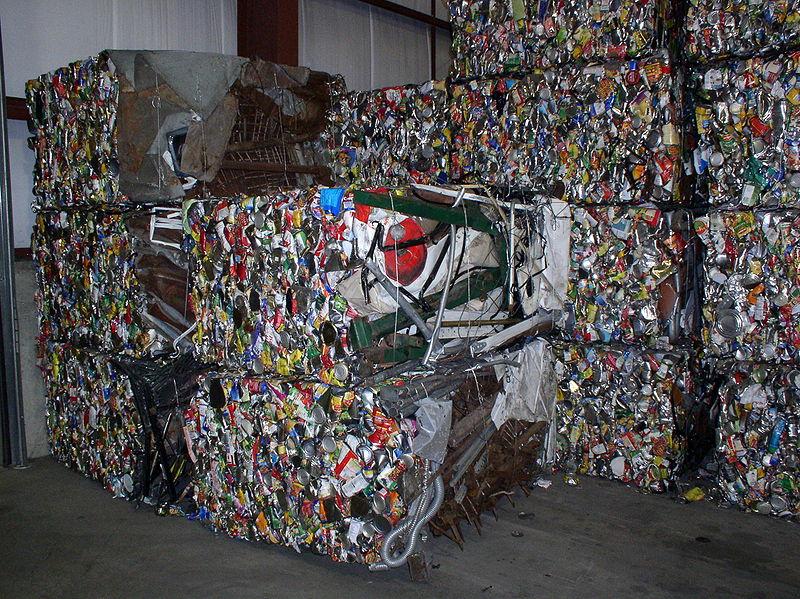

Schnitzer Steel Industries of Portland, Oregon recently released its latest sustainability report, highlighting the progress the company -- one of the largest ferrous and nonferrous scrap metal recyclers and metals manufacturers in the U.S. – says it is making across a broad range of key sustainability indicators.
The company, which generated over $2.3 billion in revenues for its last fiscal year, says it has reduced its carbon emissions, energy consumption, water usage and waste per ton produced during recycling processes in fiscal 2017 and 2018, according to the report. Based on the volume of ferrous scrap it recycled in 2018, Schnitzer estimated it avoided over 4 million metric tons of carbon dioxide (CO2) emissions. That's compared to the emissions that would likely have been produced if the equivalent amount of new steel had been produced from iron ore or removing 900,000 cars from roads for a year, according to the company’s management.
A big reason for that is that nearly 80 percent of the energy Schnitzer uses comes from renewable energy resources. “As one of North America’s largest metals recyclers, sustainability is at the core of what we do and how we operate,” said Tamara Lundgren, President and Chief Executive Officer at Schnitzer Steel.
“As part of our multi-year corporate sustainability strategy, we continue to decrease our carbon and process waste generated volumes per ton, and are deploying capital with a keen focus on making our operations even more environmentally efficient so we can consistently deliver sustainable value in the future,” added Chief Sustainability Officer Andrew Naporano.
Tracking and evaluating sustainability progress
Schnitzer salvages millions of tons of discarded ferrous and nonferrous metals destined for landfills and dumps and turns them into usable metal products. That conserves mineral and other natural resources, and it significantly reduces greenhouse gas emissions as compared to manufacturing new metals products from the mining and refining of raw metal ores.
The company operates facilities in 23 U.S. states, Puerto Rico and Western Canada. The company’s operations include deep-water export facilities on the U.S. east and west coasts, as well as others in Hawaii and Puerto Rico.
Schnitzer evaluates progress on corporate responsibility along five strategic lines:
- Integrity, ethics and compliance
- Safety, health and wellness
- Diversity, inclusion and cultural awareness
- Community engagement and partnerships
- Environmental performance and protection
The results of the company's sustainability audits and reporting are externally verified and their accuracy assured. In addition, this latest report marks the first time Schnitzer will track its sustainability key performance indicators against the Global Reporting Initiative (GRI) framework, another step towards enhancing the credibility and legitimacy of its sustainability efforts.
The company insists that its sustainability efforts extend to playing an active, positive role in the communities where it has a presence. For example, Schnitzer and its employees hosted community scrap drives and supported communities and organizations in emergency preparedness and disaster relief during the past two fiscal years, as management points out in this report.
Schnitzer’s management also created an internal Sustainability Leadership Group with the aim of developing and implementing sustainability and socially responsible business practices. Spanning internal functions within the company, the group interacts with business unit leaders and employees across geographic regions and job functions with an eye towards developing and implementing practical solutions, management explains.
Recycling in the U.S.: a challenging operating environment
Rising international trade tensions prompted by the Trump administration's decisions to levy punitive duties on imports of steel and aluminum, among other products, has been taking a heavy toll on U.S. metals recycling businesses, according to industry experts.
Speaking at the Bureau of International Recycling's Non-Ferrous Metals Division conference in London in October, Edward Meir, director of U.S.-based Commodity Research Group, said that Washington’s current trade policy was “dangerous and built on faulty assumptions,” according to a trade news report. He added that the U.S. recycling industry is a "big casualty" of recently imposed tariffs by the U.S. and China, and that the tariffs will create more problems than they will solve, leading management to cut back on investments and cancel projects.
In 2017, the U.S. produced 82 million metric tons of steel. Far and away the world's largest producer, China produced 843 million metric tons, up from 808 million in 2016, according to the U.S. Geological Survey (USGS).
The U.S. makes most of its steel and aluminum by recycling scrap metal from manufacturers and materials discarded and gathered from demolished buildings, discarded cars, trucks and other vehicles and cans. Some 68 percent of the steel produced in the U.S. last year was made from secondary or recycled steel products, according to the USGS.
An assistant professor of mechanical engineering at the University of Michigan, Daniel Cooper has been researching how to make U.S. steel and aluminum production more efficient and sustainable for the past eight years. Cooper believes it’s possible for the U.S. to reduce steel and aluminum imports dramatically by boosting reuse and recycling, which he says are much better alternatives to the imposition of trade tariffs. "Making far more of the nation’s discarded steel and aluminum scrap as good as new would have many advantages aside from its diplomatic dividends, such as cutting pollution and energy consumption," Cooper writes in a June 2018 article.
Schnitzer says it intends to move forward with its sustainability and corporate social responsibility initiatives despite having to deal with these challenges. Looking ahead to 2019, the company is investing in environmental control and advanced processing technologies, which would increase the fuel efficiency of its front-line recycling equipment, according to the report. "Our commitment to sustainable business practices and further integration of sustainability throughout our operations are key components of our long-term strategy," Lundgren said.
Image credit: blahedo/Wiki Commons